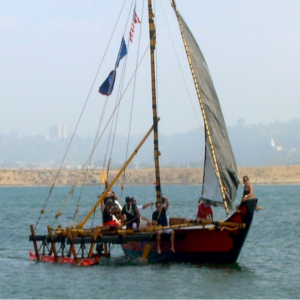Transpacific Studies and the Cultures of U.S. Imperialism
Oct. 26, 2020 | John Rowe, USC Associates’ Professor of the Humanities and professor of English, American studies and ethnicity, and comparative literature
 I am writing a book about the long history of U.S. imperialism in the Pacific and culture’s role in challenging such imperialism. The project grew out of my participation in the Transpacific Studies research group (now Center) initiated by Viet Thanh Nguyen (English/American studies and ethnicity) and Janet Hoskins (anthropology). My book builds on my earlier Literary Culture and U.S. Imperialism (Oxford University Press, 2000).
I am writing a book about the long history of U.S. imperialism in the Pacific and culture’s role in challenging such imperialism. The project grew out of my participation in the Transpacific Studies research group (now Center) initiated by Viet Thanh Nguyen (English/American studies and ethnicity) and Janet Hoskins (anthropology). My book builds on my earlier Literary Culture and U.S. Imperialism (Oxford University Press, 2000).
I am considering a wide range of case studies from this enormous and diverse region to suggest what traditional American studies can teach us about the political efficacy of cultural criticism. I have already published scholarly essays on Craig Santos Perez, the poet-activist from Guahan (Guam), Edouard Glissant’s Caribbean perspective on Micronesian independence, and an overview of 19th-century U.S. literary treatments of the Pacific in Herman Melville, Edgar Allan Poe, and Henry Adams. Right now, I am working on a chapter focusing on Hawaiian King David Kalakaua’s Hawaiian ethnography and Queen Liliuokalani’s Hawaii’s Story (1900) as challenges to the coup d’état by which the U.S. annexed the Hawaiian Islands. Another chapter in the works focuses on Edward S. Curtis’s film, In the Land of the Head-Hunters (1914), the first feature film made in Canada and the first film to include an entirely indigenous cast from the Kwakwaka’wakw people of Northern Vancouver Island. Still another chapter will treat Lisa See’s recent The Island of Sea Women: A Novel (2019) and Gabrielle Brady’s film about the Australian detention prison on Christmas Island, The Island of the Hungry Ghosts (2018).
These case-studies are intended to suggest the wide reach of U.S. imperial authority in the region and its secondary influence on Australia, South Korea, Japan, France, and New Zealand as key political forces in the modern Pacific.